-
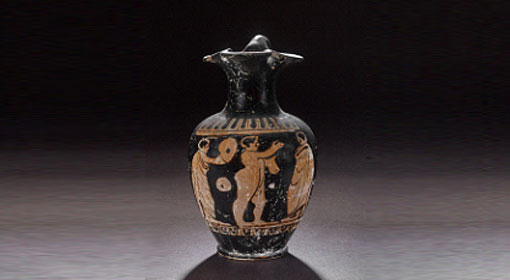
Pottery: red-figure oinochoe.Design red on black ground; above, tongue-pattern; below, egg-moulding. An ephebos to right, with bordered himation over left shoulder, holding out a ball; before him, a ball; and a nude ephebos to right, with hands extended to a third wrapped in a bordered himation. Height 17.78 cm Production place, Attica. Date, 370-350 B.C. Find spot, Nisyros. Acquisition Source:Donated by Viscount Statford de Redcliffe. Excavator field collector, Sir Charles Thomas Newton, 1856. PRN GAA8081.
-
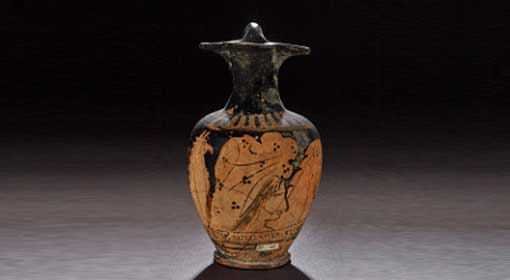
. Pottery: red-figure oinochoe. Above, tongue-pattern; below, egg-moulding.
Head of an Arimasp* (on horseback) to right, with long hair and embroidered Phrygian cap, the horse's head visible; behind, the head and neck of a Gryphon** with crest and mane. Height 16.51 cm. Production place, Attica. Date, 370-350 B..C. Find spot, Nisyros. Acquisition Source, Sir Charles Thomas Newton, 1859, purchased through. PRN GAA8086.
*Arimasps. mythical people, Scythian origin.
**Gryphon. A legendary creature, usually portrayed with the head, talons, and wings of an eagle, the body of a lion. Common in Greek mythology
-
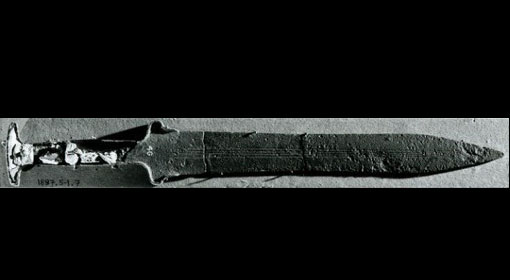
Bronze double-edged knife. Length 17.10 cm. Production dat: 1600BC-1060B.C. Period: Mycenaean. Findspot. Place: Nisyros. Without reference to Newton’s excavation. Association: A (Purchased through). Acquisition Date 1859. PRN: GAA13102
-
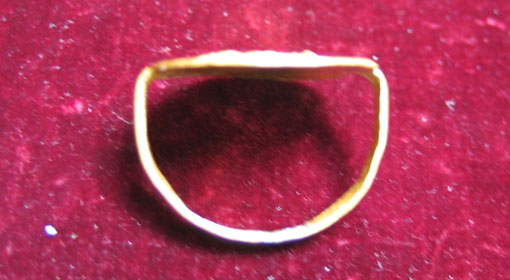
Gold finger-ring; flat hoop; large circular bezel with a Gorgoneion (mythical people) in low relief; of late type with two heads of serpents above the forehead, their tails tied beneath the chin; the mask is separately modelled, and attached to the bezel. Dimension: D (Diameter): 2.60 centimetres. Material: gold. Production date: 4thC BC-3rdC BC [399 BC - 200 BC]. Findspot and Field Collection.Place: Nisyros. Acquisition Source: Sir Charles Thomas Newton, purchased through 1859. Previous owner: Campbell, G. PRN: GAA29399.
-
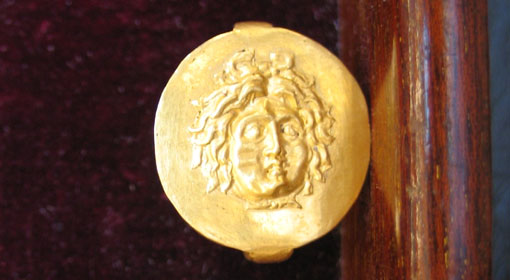
ΧGold finger-ring; flat hoop; large circular bezel with a Gorgoneion (mythical people) in low relief; of late type with two heads of serpents above the forehead, their tails tied beneath the chin; the mask is separately modelled, and attached to the bezel. Dimension: D (Diameter): 2.60 centimetres. Material: gold. Production date: 4thC BC-3rdC BC [399 BC - 200 BC]. Findspot and Field Collection.Place: Nisyros. Acquisition Source: Sir Charles Thomas Newton, purchased through 1859. Previous owner: Campbell, G. PRN: GAA29399.
-
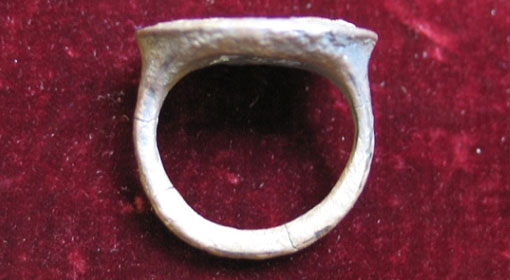
Silver finger-ring; oval bezel; soldered to the centre of the bezel is the upper part of the figure of Demeter(?) in gold. Diameter: 2.30 cm. Production date: 4thC BC-3rdC BC[399 BC - 200 BC]. Findspot.Place: Nisyros. Acquisition Source. Sir Augustus Wollaston Franks, 1897. PRN: GAA30984.
-
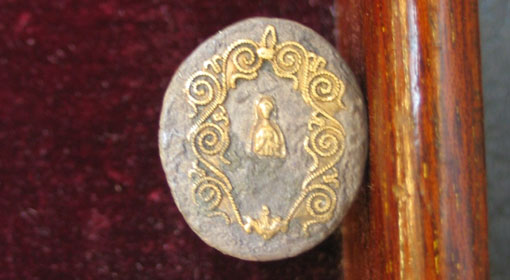
Silver finger-ring; oval bezel; soldered to the centre of the bezel is the upper part of the figure of Demeter(?) in gold. Diameter: 2.30 cm. Production date: 4thC BC-3rdC BC[399 BC - 200 BC]. Findspot.Place: Nisyros. Acquisition Source. Sir Augustus Wollaston Franks, 1897. PRN: GAA30984.
